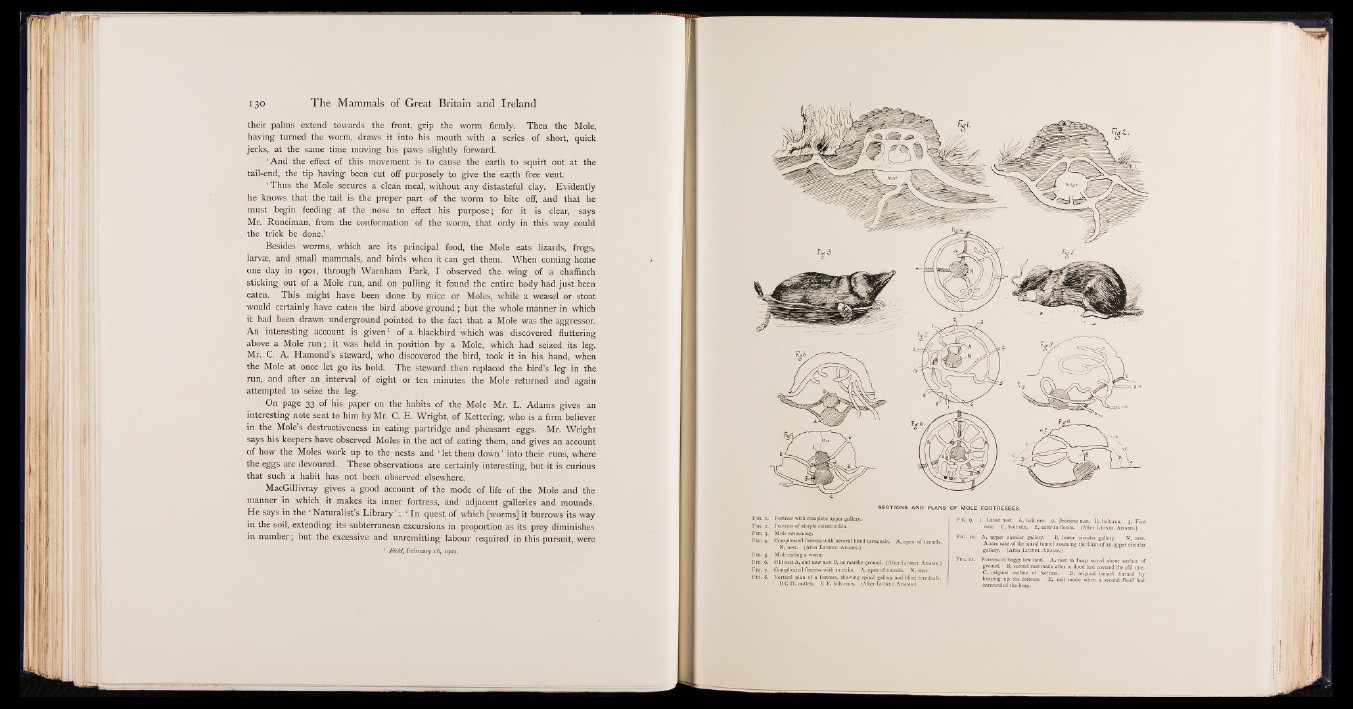
their palms extend towards the front, grip the worm firmly. Then the Mole,
having turned the worm, draws it into his mouth with a series of short, quick
jerks, at the same time moving his paws slightly forward.
‘And the effect of this movement is to cause the earth to squirt out at the
tail-end, the tip having been cut off purposely to give the earth free vent.
‘ Thus the Mole secures a clean meal, without any distasteful clay. Evidently
he knows that the tail is the proper part of the worm to bite off, and that he
must begin feeding at the nose to effect his purpose; for it is clear, says
Mr. Runciman, from the conformation of the worm, that only in this way could
the trick be done.’
Besides worms, which are its principal food, the Mole eats lizards, frogs,
larvae, and small mammals, and birds when it can get them. When coming home
one day in 1901, through Warnham Park, I observed the wing of a chaffinch
sticking out of a Mole run, and on pulling it found the entire body had just been
eaten. This might have been done by mice or Moles, while a weasel or stoat
would certainly have eaten the bird above ground; but the whole manner in which
it had been drawn underground pointed to the fact that a Mole was the aggressor.
An interesting account is given1 of a blackbird which was discovered fluttering
above a Mole run; it was held in position by a Mole, which had seized its leg.
Mr. C. A. Hamond’s steward, who discovered the bird, took it in his hand, when
the Mole at once let go its hold. The steward then replaced the bird’s leg in the
run, and after an interval of eight or ten minutes the Mole returned and again
attempted to seize the leg.
On page 33 of his paper on the habits of the Mole Mr. L. Adams gives an
interesting note sent to him by Mr. C. E. Wright, of Kettering, who is a firm believer
in the Mole’s destructiveness in eating partridge and pheasant eggs. Mr. Wright
says his keepers have observed Moles in the act of eating them, and gives an account
of how the Moles work up to the nests and ‘ let them down ’ into their runs, where
the eggs are devoured. These observations are certainly interesting, but it is curious
that such a habit has not been observed elsewhere.
MacGillivray gives a good account of the mode of life of the Mole and the
manner in which it makes its inner fortress, and adjacent galleries and mounds.
He says in the ‘ Naturalist’s Library’ : ‘ In quest of which [worms] it burrows its way
in the soil, extending its subterranean excursions in proportion as its prey diminishes
in number; but the excessive and unremitting labour required in this pursuit, were
1 Field, February 16, 1901.